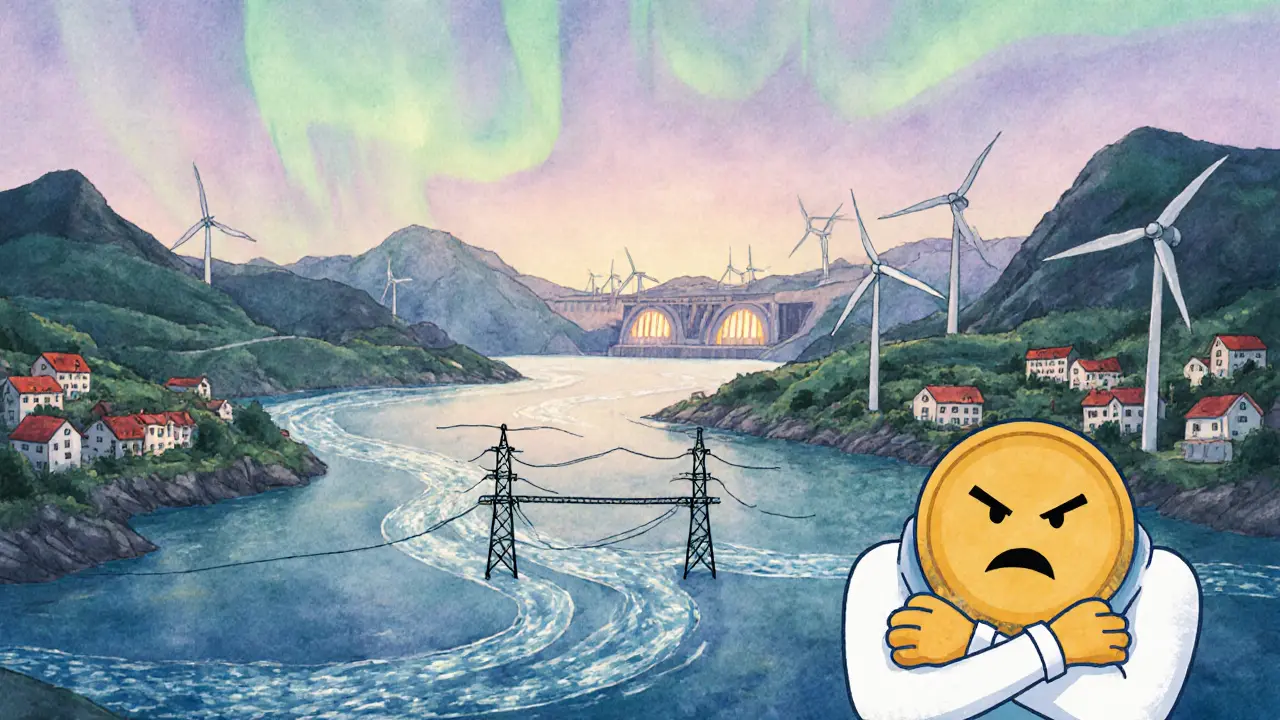
Norway Energy Allocation Calculator
Energy Comparison Tool
Calculate how much energy a crypto mining operation uses and compare it to essential community services in Norway.
Norway's largest mining facilities use 50,000-200,000 MWh annually
Energy Allocation Breakdown
Equivalent to powering hospitals for a year
Equivalent to running schools full-time
Equivalent to charging electric vehicles
Norway's hydropower is already fully allocated to homes, industries, and essential services. Every kilowatt-hour used for mining is one less for hospitals, schools, or factories.
When you think of Norway, you probably picture fjords, northern lights, and clean energy. But in 2025, the country made headlines for something unexpected: crypto mining. Not because it was booming - but because it was being shut down.
Why Norway Is Banning New Crypto Mining Operations
Norway has one of the cheapest and cleanest sources of electricity in the world: hydroelectric power. That made it a magnet for Bitcoin and cryptocurrency miners looking for low-cost, renewable energy. By 2024, data centers for crypto mining were popping up across the country, especially in the north, where water flow from mountains powers turbines year-round. But here’s the problem: mining uses a ton of power - and gives almost nothing back. The Norwegian government looked at the numbers and decided it wasn’t worth it. A single large crypto mining facility can use as much electricity as a small town. That’s fine if you’re powering it with excess wind or solar you can’t store. But in Norway, hydroelectric power is already fully allocated to homes, factories, and key industries. Every kilowatt used for mining is one less kilowatt for a steel plant, a hospital, or a school. In June 2025, the Labour Party government announced a temporary ban on new cryptocurrency mining data centers. The goal? Redirect energy toward industries that create real jobs and local value. As Minister for Digitalization Karianne Tung put it: "Crypto mining is very power-intensive and generates little in the way of jobs and income for the local community."It’s Not About Crypto Itself - It’s About Opportunity Cost
Let’s be clear: Norway isn’t banning Bitcoin ownership. You can still buy, sell, and hold crypto. Exchanges operate legally. Taxes apply to gains. The ban targets only new mining facilities. Existing mines? They’re allowed to keep running - for now. The government wants to see how much energy they’re actually using before deciding whether to phase them out too. This isn’t a moral stand against blockchain. It’s a cold, hard economic calculation. Norway spends billions building and maintaining its hydropower grid. That infrastructure doesn’t come free. When miners pay low rates for electricity, they’re essentially getting a subsidy from Norwegian households and businesses. Meanwhile, those same households are seeing rising energy bills because of Europe’s post-war energy crisis. The real issue? Opportunity cost. That same electricity could power a battery factory, a hydrogen fuel plant, or a data center for healthcare records - all things that employ Norwegians, pay taxes locally, and build long-term resilience. Crypto mining doesn’t do that. It’s a global operation with no local roots.How Norway’s Ban Compares to Other Countries
Norway isn’t the first country to crack down on crypto mining - but its approach is unique. China banned mining outright in 2021, forcing thousands of operations to flee. Russia banned it in 10 regions in early 2025 after blackouts hit. Kosovo shut it down in 2022 because the grid couldn’t handle the load. New York State imposed a two-year moratorium on mining powered by fossil fuels. But Norway’s move stands out because it’s not reactive - it’s strategic. Other countries banned mining because they were running out of power. Norway is banning it because it has plenty - and wants to use it better. It’s also temporary. The government says it will reassess in two years. That’s a key detail. This isn’t a knee-jerk reaction. It’s a pause to gather data, monitor trends, and see if new, more efficient mining tech emerges.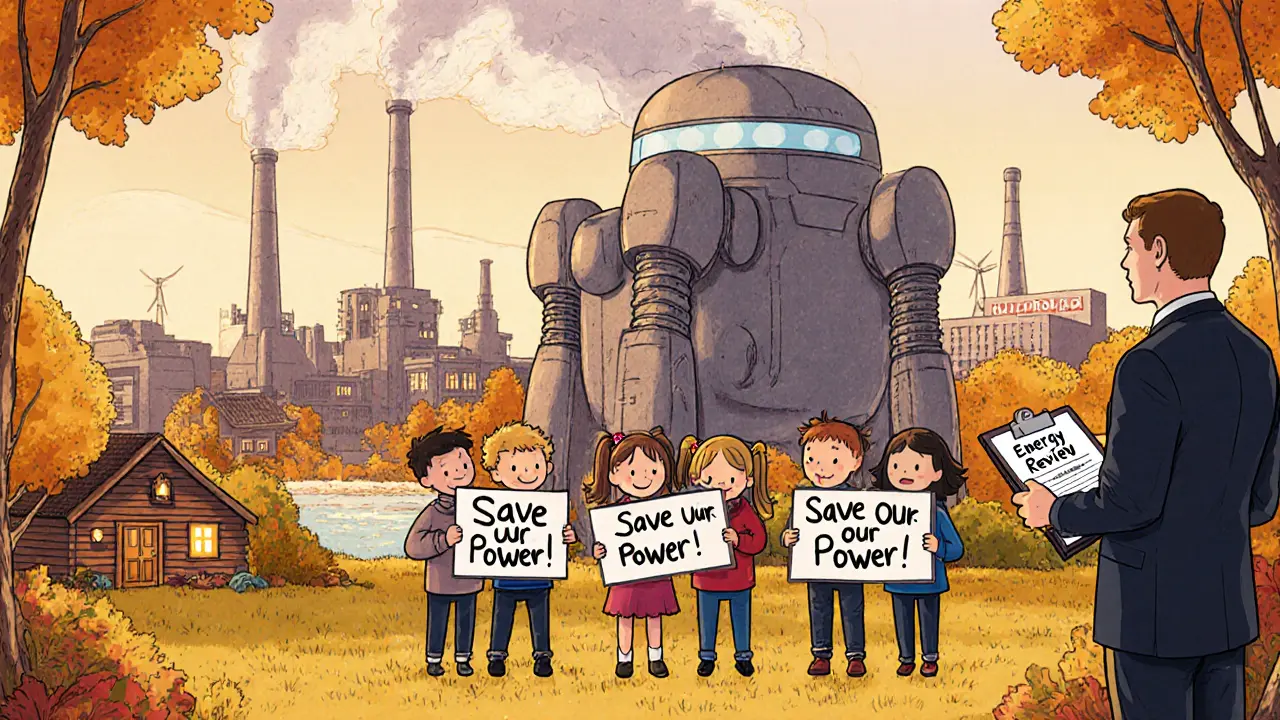
What Does the Ban Actually Cover?
The proposed law doesn’t say "no more Bitcoin mining." It says: "No new large-scale, power-hungry data centers." The government is using its authority under the Planning and Building Act to control where and how energy is used. That means new mining operations can’t get permits for land, grid connections, or water cooling systems. They’ve also started requiring all crypto mining facilities - existing and new - to register with authorities. That’s how they know how much power each one uses. Before this, estimates were rough. Now, they have exact numbers. The ban targets "power-intensive" mining. That likely means large-scale operations using ASIC miners. Smaller, low-power setups - like someone running a single miner at home - aren’t the focus. The goal isn’t to punish individuals. It’s to stop industrial-scale energy drains.What This Means for the Global Crypto Industry
Norway was once a top destination for crypto miners. Its clean energy, stable government, and low taxes made it ideal. Now, it’s a warning sign. Other countries with abundant renewables - Iceland, Canada, Sweden, Finland - are watching closely. If Norway’s ban sticks, they might follow. Why? Because the math is the same: clean energy is expensive to produce. If you’re using it to run machines that only benefit global investors, you’re making a bad trade. Some crypto advocates argue mining drives investment in renewables. They say miners build new dams or wind farms to power their operations. But Norway’s government says: we already have those. We don’t need mining to incentivize them. The real shift here is philosophical. For years, the crypto world claimed it was "decentralized" and "democratic." But when a small number of mining farms gobble up national energy supplies, that’s not decentralization - it’s centralization of power, just in a different form.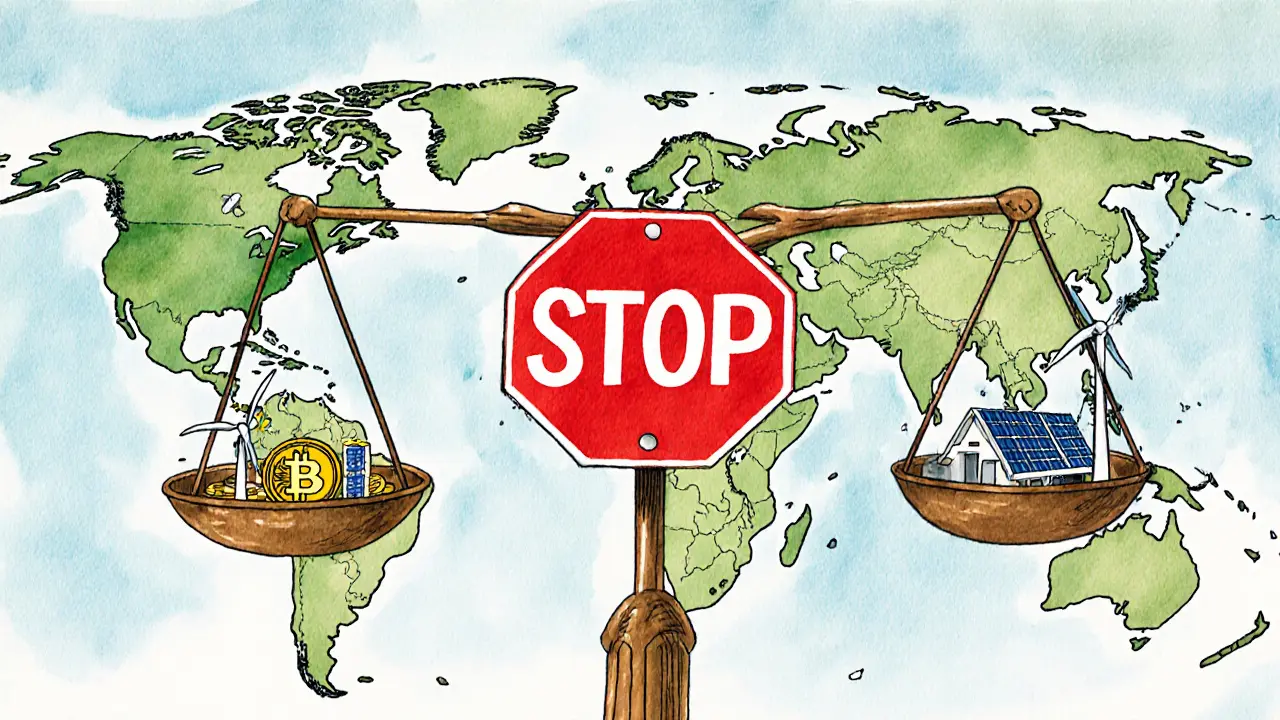
What’s Next for Norway’s Crypto Policy?
By October 2025, the ban was expected to take effect. Official documents confirm that the government moved forward with the restriction. New mining permits are no longer being issued. Existing operators must now report monthly energy usage. The next step? A review in late 2026. If energy demand from mining grows beyond 1% of national consumption, the ban could become permanent. If mining tech improves - say, miners use 50% less power - the ban might be lifted or adjusted. Norway is also pushing for international coordination. It’s working with the EU and Nordic neighbors to create shared standards for energy use in crypto operations. The message is clear: if you’re going to mine, don’t take from communities that need the power more.What Should Crypto Investors and Miners Do?
If you’re a miner in Norway: keep operating, but register. Don’t assume you’re safe forever. The government has tools to monitor you - and they’re watching. If you’re thinking of setting up a new mining operation: look elsewhere. Iceland might still be open, but even there, pressure is growing. The era of mining anywhere with cheap power is ending. Governments are waking up to the fact that energy is a public good - not a commodity to be auctioned off to the highest bidder. For investors: this isn’t a death knell for Bitcoin. But it does mean mining is becoming harder, more regulated, and less profitable in places that used to be easy. The days of buying ASICs and plugging them into a Norwegian outlet are over.Why This Matters Beyond Norway
This isn’t just about Norway. It’s about what happens when a country has to choose between global tech trends and local survival. We’ve seen this before. In the 1990s, countries let telecom companies build towers anywhere. Then came the backlash: noise, visual pollution, land use conflicts. Governments stepped in. Now, there are zoning laws. Crypto mining is heading the same way. It’s not the technology that’s the problem. It’s the scale. And when scale starts eating up public resources, governments respond. Norway’s move signals a turning point. The world is no longer willing to trade clean energy for digital gambling. The real value isn’t in mining coins - it’s in mining jobs, innovation, and sustainable growth. The question now isn’t whether other countries will follow. It’s how soon.20 Comments
Write a comment
More Articles

BabySwap BABY Token Airdrop Details: How to Qualify and Claim in 2025
BabySwap's 2025 BABY token airdrop rewarded active users who staked, traded, or held NFTs in 2024. Learn how to qualify, claim tokens, avoid scams, and prepare for the next airdrop.
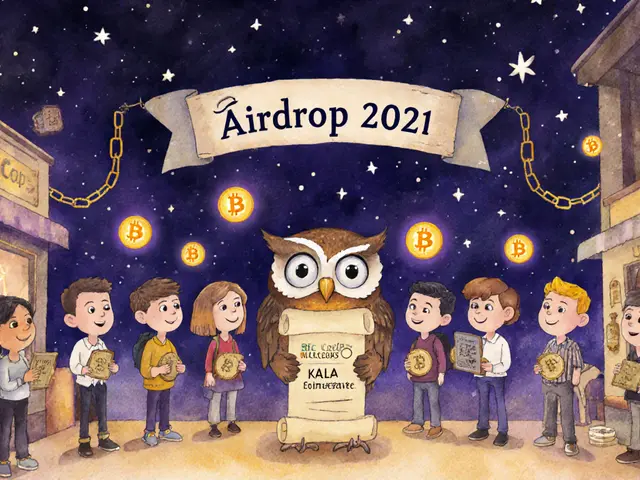
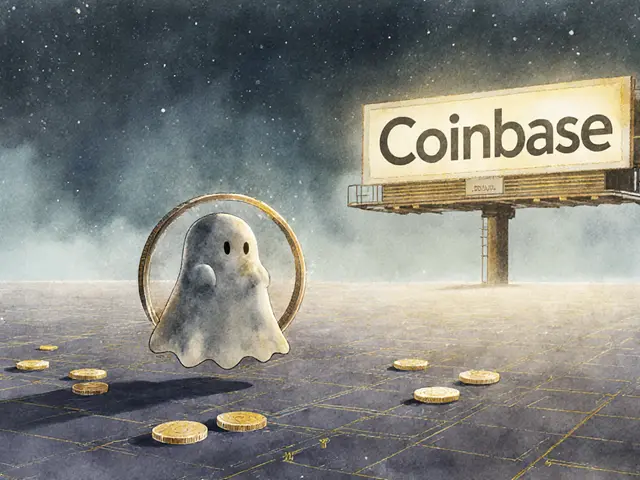
Alisa Rosner
October 30, 2025 AT 13:27So Norway’s like, ‘Nah, we ain’t letting crypto eat our clean power.’ 🙌 I get it. We got kids, hospitals, schools-none of those run on Bitcoin. 🌊⚡